Latest News

What Requirements Should The Protective Layer Of Stainless Standard Parts Meet

Precautions For Anti-corrosion Maintenance Layer Of Standard Parts

How To Deal With The Rust Of Stainless Steel Fasteners

How To Transport And Store Fasteners

What Are The Main Material Classifications Of Standard Parts

The Correct Operation Method Of Fastener Processing
Six Common Problems in Fastener Cleaning
Dec 20, 2021 View: 2318
In order to make the fastener manufacturers better use, when we use the fasteners, we need to protect them regularly, such as cleaning the fasteners regularly, so as to improve the efficiency of their use. But when we clean the fasteners, we often find some problems, among which there are six major problems.
1. Pollution caused by rinsing.
After quenching with silicate cleaning agent and then rinsing, XX solid matter appeared on the surface, which was analyzed by IR spectroscopy and confirmed to be inorganic silicate and iron oxide. This phenomenon is caused by not completely remaining silicate on the surface of the fastener.
2. Unreasonable accumulation of fasteners.
After the fastener is tempered, there are traces of discoloration. Use immersion to let the remaining oily residue be found after evaporation. This type of substance is lipid. It shows that the fastener is contaminated by cleaning agent and quenching oil during the rinsing process, and it dissolves at the heat treatment temperature, leaving chemical burns. This is a material that is not clean on the surface of the fastener. Analyze the mixture of base oil and ether of quenching oil by infrared spectrometer. Ethers may be derived from quenching oil additives. Through the analysis of the quenching oil of the mesh belt furnace, it is proved that during the hot pressing process, due to unreasonable stacking, the fasteners are slightly oxidized in the quenching oil, but it can be almost ignored. This phenomenon is related to the cleaning process, not Quenching oil.
3. Surface residue.
The white spot on the high-strength screw was analyzed with an infrared spectrometer, and it was confirmed that it was a phosphide. It is not cleaned with acidic cleaning agent, and the inspection of the rinsing tank shows that the carbon solubility is relatively high. The tank liquid should be poured out regularly, and the concentration of the lye in the rinsing tank should be checked frequently.
4. Alkali burn
The high-strength screw is blackened after quenching, the oil surface is smooth, and the surface is bright. But the place with orange XX in the outer circle is visible to the naked eye. In addition, you can also see slightly bluish or reddish areas. The original rod and disc are coated with a phosphating film that is conducive to cold heading and tapping, cooled in quenching oil, washed with alkaline cleaning agent, and blow-dried (not rinsed). Tempered at 550°C, and removed from the tempering furnace in the hot state Take out the dipping anti-rust oil, as a result, red mottled spots were found on the screw threads.
Check that the red areas on the screws of high-strength fasteners are caused by alkali burns, which contain chlorinated substances. Calcium-containing compounds will burn the appearance of steel fasteners during the heat treatment process, leaving scars on the surface of the fasteners.
In the quenching oil, steel fasteners cannot remove the alkalinity of the surface, so the surface burns in the high-temperature austenite state, and the damage is aggravated during the next tempering. It is recommended to thoroughly clean and rinse fasteners before heat treatment to completely remove the bases that cause fasteners to burn.
5. Improper rinsing.
High-standard fasteners are often quenched with polymer aqueous solutions. Before quenching, they must be cleaned and rinsed with an alkaline cleaning agent. The hardened fasteners have been rusted internally. Through infrared spectroscopy analysis, it is confirmed that in addition to iron oxide, it also contains sodium, potassium, and sulfur, indicating that alkaline cleaning agent is adhered to the inside of the fastener, which is likely to be potassium hydroxide, sodium carbonate and other similar substances to make it rust. Check whether the fasteners are contaminated by rinsing. At the same time, it is recommended to change the rinsing water frequently. In addition, adding rust inhibitors to the water is also a good way.
6. Excessive rust.
Some black bars often appear in high-strength fasteners. In the test, it can be seen that the fasteners before heat treatment have been rinsed with inorganic and organic cleaning agents. After quenching, black bars are still found even before heat treatment. Fine cleaning will also leave traces after heat treatment. Using infrared spectroscopy to analyze the surface residues, it was found that the content of sulfide and calcium was relatively high. Wipe a small piece of test paper on the dark spot and leave the dark spot on the filter paper with a small amount of isopropanol acetate. The analysis of filter paper by infrared spectrophotometer shows that calcium, sulfur, iron, manganese, and chromium are the main components.
No Information
You Might Also Like
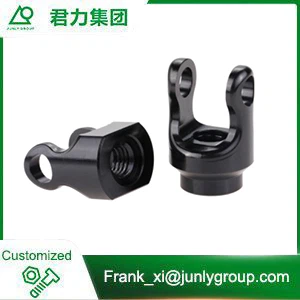
Aluminum Alloy CNC Machining Parts For Medical Devices
Learn More
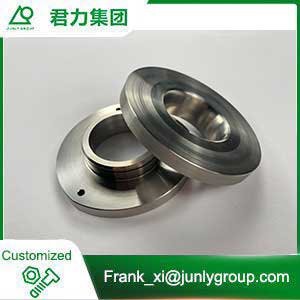
Flange Accessories
Learn More
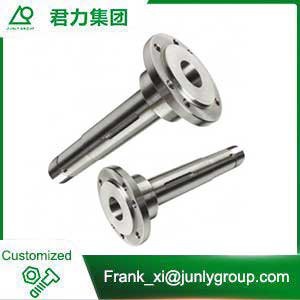
Stainless Steel Machined Parts
Learn More
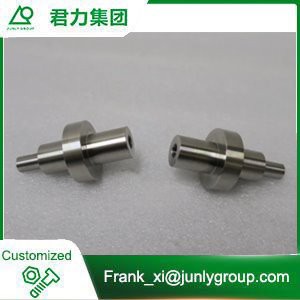
High Precision CNC Machined Lathe Medical Part
Learn More
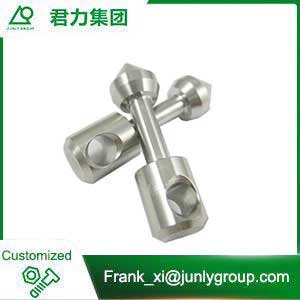
Precision Machined Parts
Learn More
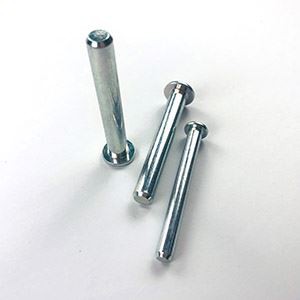
Hex Socket Button Head Screws
Learn More
Send Inquiry
Copyright © SIP Junly Industrial Precision Co., Ltd. All Rights Reserved.